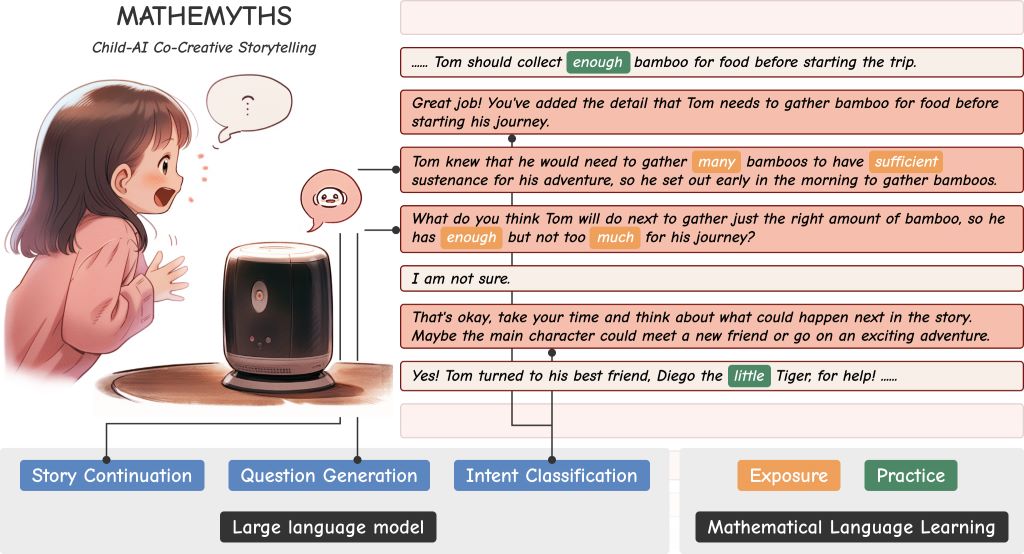Large Langauge Models to Support Learning Through Storytelling
Over several years, our focus has been on studying children’s engagement with “conversational AI.” Previously, these interactions involved AI asking children questions, children responding, and the AI evaluating their answers. Throughout our research, we have consistently discovered that this question-and-answer approach effectively supports children’s learning. However, with recent advancements in large language models, such as ChatGPT, we are now excited by the prospect of examining whether children can engage in more spontaneous and less structured exchanges with AI. Such an approach could potentially allow them to harness their creativity and imagination to a higher degree.
Our goal is to investigate the influence of large language models and generative AI on children’s education. As a first step, we’ve begun a research study that employs generative AI to jointly create math-oriented narratives with children. In this interactive process, both the children and the AI alternately contribute to the story, with the AI fostering an environment where children utilize their mathematical knowledge and linguistic skills to guide the story’s character on their journey.

Research Design
In this study, we will utilize an experimental design to assess children’s learning of mathematical terms, such as “estimate,” “equal,” “sum,” and “difference,” by involving them in story co-creation with generative AI.
Children participating in the study will either co-create stories with an AI or a human experimenter, or listen to a pre-scripted story narrated by the AI or experimenter, paired with relevant questions. The study will consist of two 30-minute sessions.
During the first session, children will participate in several brief activities, which include creating a story, solving math puzzles, and responding to questions about everyday objects. Concurrently, a parent or legal guardian will fill out a 20-minute survey concerning their demographics, their child’s interactions with voice assistants and technology, their child’s language background, and daily behaviors.
In the second session, children will either co-create or listen to a math-based story told by an AI or a researcher. Afterward, they will complete post-tests to evaluate their learning outcomes and the level of enjoyment derived from the activity.
